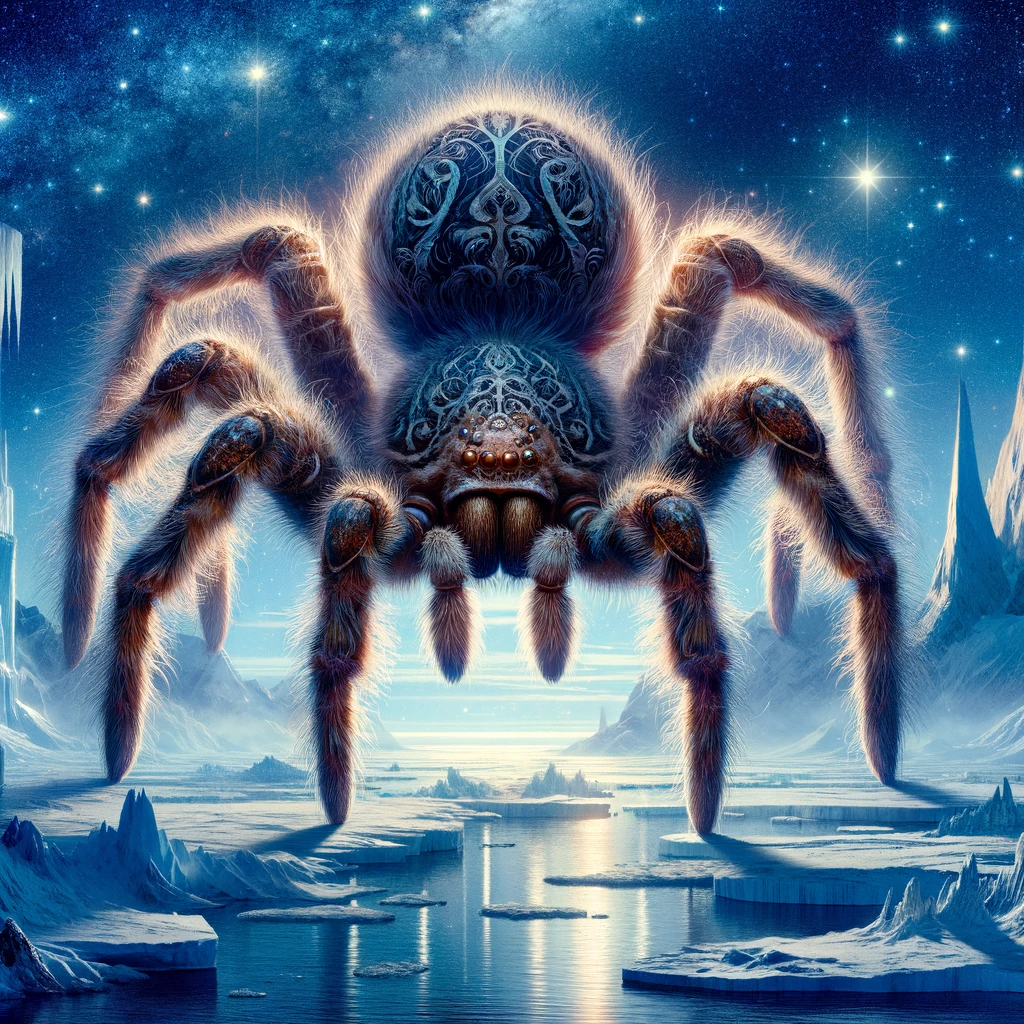
The spider deity Gagakputunum from Inuit mythology is a lesser-known figure in the rich tapestry of Inuit spiritual beliefs and legends. Inuit mythology, which originates from the Arctic regions inhabited by the Inuit people, is a complex system of beliefs and stories that reflect the harsh and beautiful environment in which they live.
Gagakputunum, in the Inuit pantheon, is unique for being a spider deity. Spiders in many cultures symbolize various attributes including creativity, patience, and the interconnectivity of all things. As with many spider entities in global mythologies, Gagakputunum could be perceived as a weaver, not just of webs but of fate and the interconnectedness of the natural and spiritual worlds.
In Inuit culture, the spiritual world is closely intertwined with the natural one. Every object, animal, and aspect of the environment is believed to have its own spirit. This animistic belief system underscores the respect the Inuit have for their environment and the creatures within it. Gagakputunum, being a spider deity, would fit into this worldview by embodying attributes associated with spiders, such as resourcefulness, adaptability, and the ability to navigate and thrive in challenging environments.
One of the fascinating aspects of Inuit mythology is how it reflects the environment and the experiences of the people. The Arctic is a place of extremes, where survival depends on keen awareness and deep understanding of the surroundings. Deities like Gagakputunum could be seen as symbolic representations of the skills and qualities necessary for survival in such a landscape.
Gagakputunum’s role in Inuit myths, stories, or rituals, however, is not extensively documented in mainstream sources. This lack of detailed information could be attributed to several factors. Inuit oral traditions are rich and varied, with stories often changing from one generation to another and from one region to another. Furthermore, the Inuit’s historical isolation and the later impacts of colonization and cultural assimilation have led to the loss or transformation of many traditional beliefs and practices.
The study of Gagakputunum and other aspects of Inuit mythology is not just an academic exercise but a means to understand and appreciate the worldview of the Inuit people. By exploring these myths, we gain insight into how the Inuit relate to their environment and the spiritual dimensions they perceive in the world around them.
In conclusion, while specific details about Gagakputunum are scarce, this spider deity’s existence in Inuit mythology is a testament to the richness and diversity of Inuit spiritual beliefs. It reminds us of the intricate ways in which different cultures across the world have interpreted the natural elements around them and woven these interpretations into their spiritual and mythological fabric.
